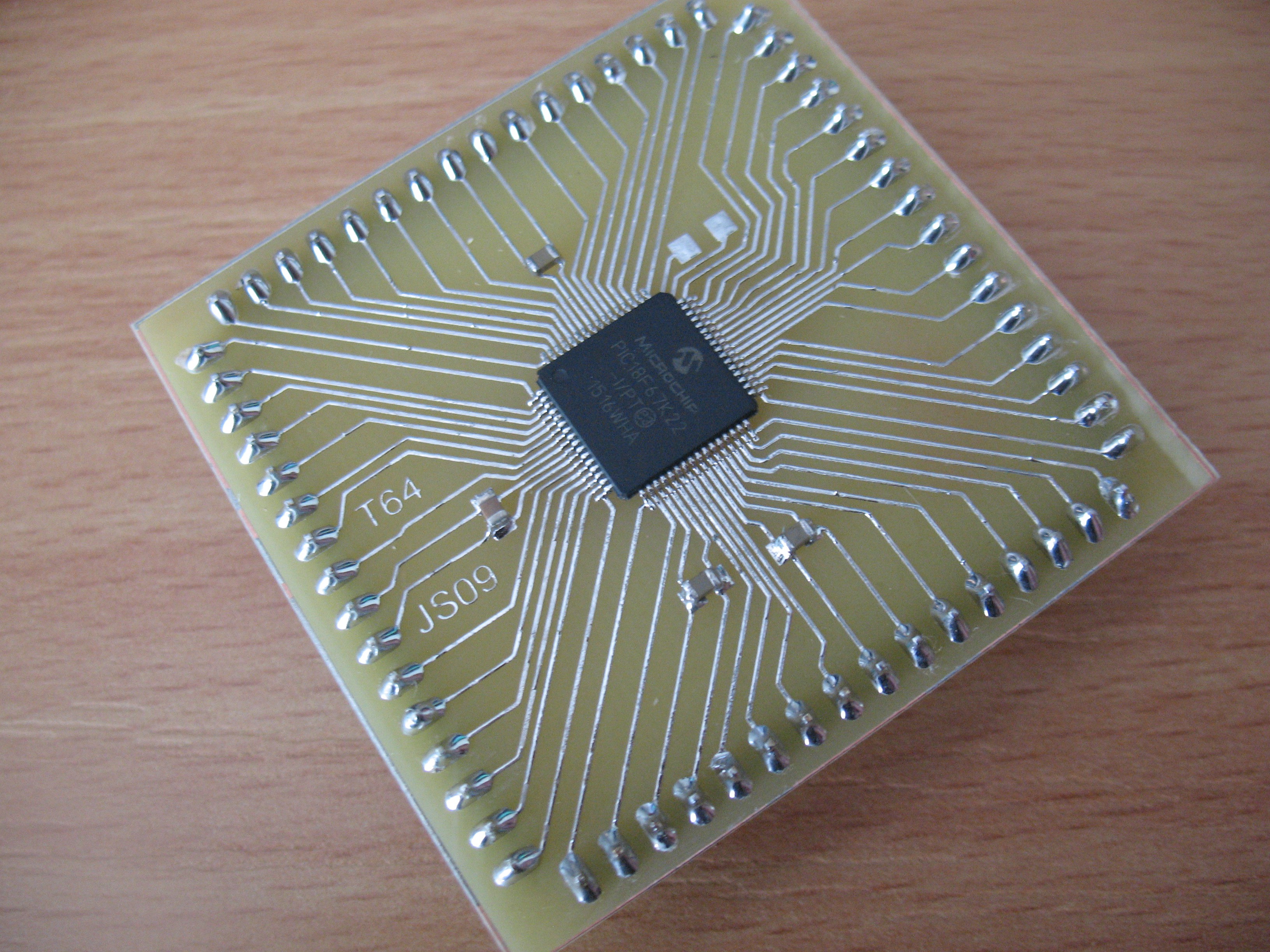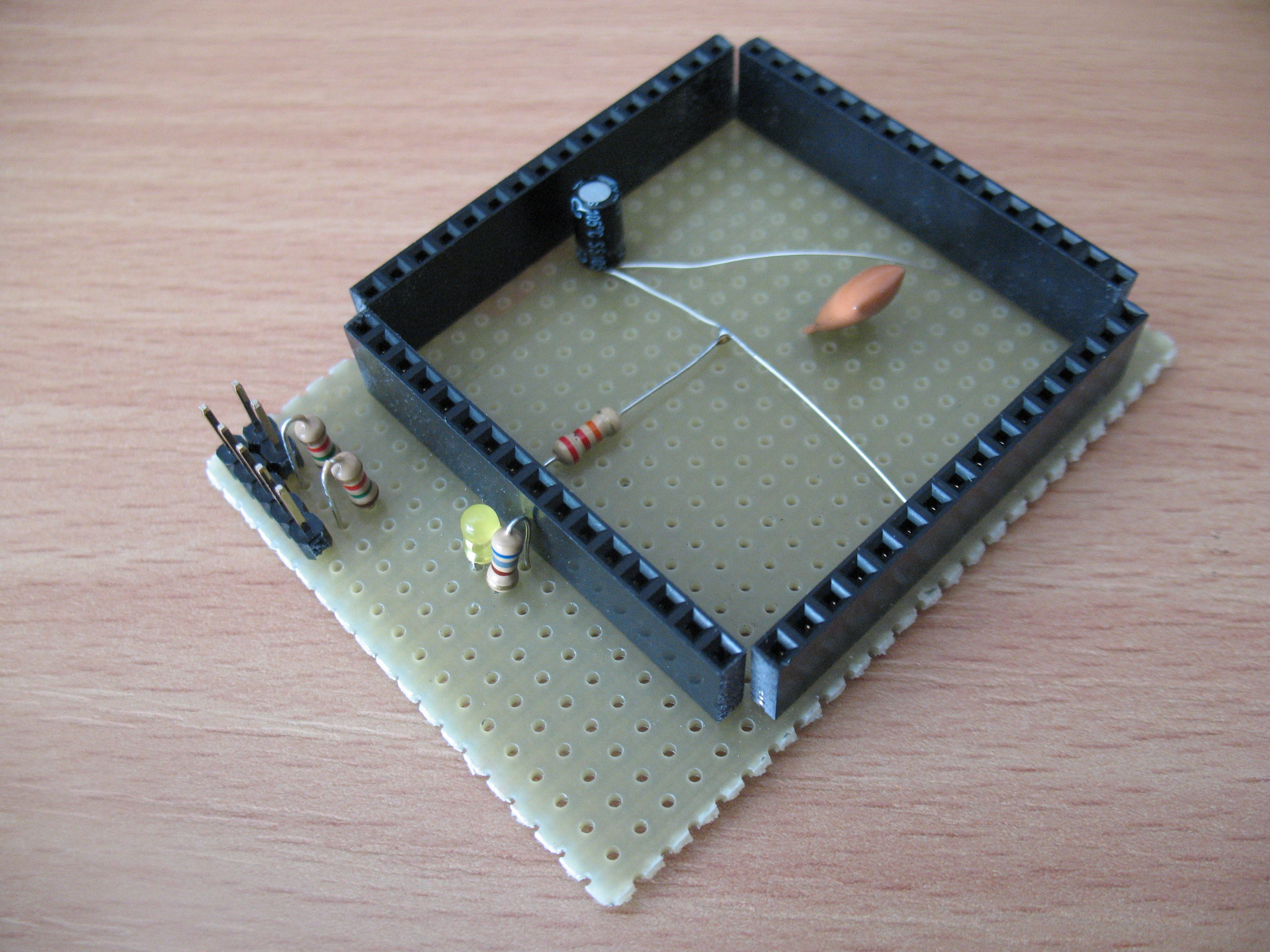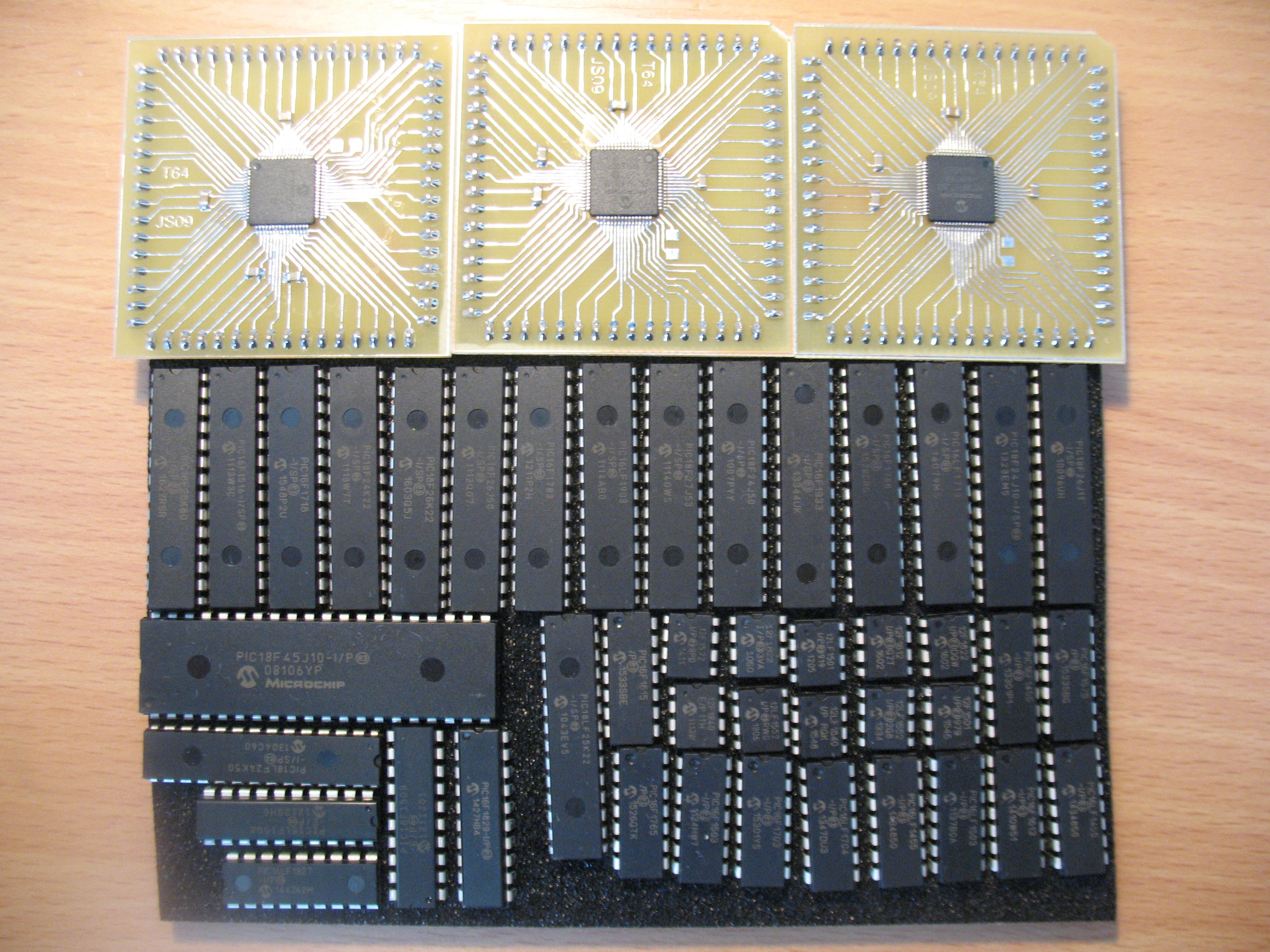-
version 0.99
06/28/2018 at 11:17 • 1 commentSupport for new PIC18FxxQ10 is added (by the way, its FLASH is programmed in different way than most of the other new PIC16 and PIC18 devices, thank you Microchip for another programming algorithm to implement), now it's 439 devices in total. It looks like there are no other LVP programmable 8-bit PIC devices, so probably I can polish it and release version 1.00 soon.
-
version 0.98
06/19/2018 at 13:13 • 0 commentsAs usual, on github.
I added some new devices - PIC16F184xx, PIC18FxxK40 and PIC18FxxK42, support list having 433 entries by now.
Also, programming speed for some devices is increased.
-
version 0.97
06/18/2018 at 11:59 • 1 comment60 new devices from PIC16F153xx, PIC16F183xx, PIC16F188xx and PIC16F19xxx added, resulting in support for 379 devices in total. For a moment, I'm adding support for new MCUs faster than Microchip can develop them, neat!
I tested 5 new ones, resulting in 52 MCU types tested.
-
version 0.96
06/17/2018 at 23:11 • 0 commentsAfter nearly two years, I refreshed this project again.
Apparently, Microchip introduced new programming specification for newer PIC devices, like PIC16F1xxxx and PIC18FxxK20 and PIC18FxxK22. The old format was LSB first, either with mix of 8/14 bit long words (for PIC16Fxxx) or 8-bit long words, but a lot of direct instructions entering (PIC18). This seems to be unified now (see the famous XKCD comics) with MSB-first and 8-bits only words. Nice initiative, only if there were already a few different formats among PIC devices.
Honestly, I was too lazy to implement it, but there is already quite a few "new format" devices in the wild, so I finally got myself to add it to pp3 programmer, so here you go. Only PIC16F188xx are added, but more will follow.
-
pics of PICs, version 0.95
09/16/2016 at 11:15 • 1 commentToday I made some more progress. I added support for more PIC18FxxKxx devices, so the total supported devices count is 305. There will not be much more of them.
I tested a few new ones, including PICs in TQFP package. Unlike for DIP packages, breadboard and wires are not enough, so I had to use TQFP adapter I made few years ago for PIC24 and PIC32 series, but with single cut trace it works for PIC18 too.
There is nothing more than micro and decoupling caps. By the way - JS09 really means year 2009. The time flies.
For this adapter I made simple testbench of perforated PCB.
With this one I tested PIC18F66J15, 67K22 and 67J50, each on its own breakout.
And this is gallery of all PIC devcies I programmed with this Arduino programmer. Every single MCU here has blink a LED program flashed. Much blinking power, very wow.
-
version 0.94 - PIC18FxxKxx CAN devices added
09/14/2016 at 16:42 • 0 commentsIn version 0.94 I added support for CAN devices like PIC18F25K80, 12 new in total. New firmware is released too.
Everything is on github.
-
version 0.93
09/12/2016 at 09:28 • 0 commentsI hunted a bug with programming PIC18F24J10, but finally I got it working - so version 0.93 is out.
I ordered some more PIC18FxxJxx devices to test the programming protocol implementation. After tested, I'm going to do the final sources cleanup and release version 1.00.
Files are on github, as usual.
-
Version 0.92 - major rework
09/09/2016 at 11:14 • 0 commentsI reworked the MCU selection code. The if-then structure was OK for dozen of devices, but with more than 200 supported MCUs, it became messy. So I rewrote it into simple plain text file database with entries like
# PP3 device database for version 0.92 # # name flash page ID mask family_type # flash size and page size in bytes 1 WORD = 2 BYTES # # PIC16 family 16f1503 4096 32 2CE0 FFE0 CF_P16F_A 16lf1503 4096 32 2DA0 FFE0 CF_P16F_A 16f1507 4096 32 2D00 FFE0 CF_P16F_A 16f1508 8192 32 2D20 FFE0 CF_P16F_A 16f1509 16384 32 2D40 FFE0 CF_P16F_A 16lf1507 4096 32 2DC0 FFE0 CF_P16F_A 16lf1508 8192 32 2DE0 FFE0 CF_P16F_A 16lf1509 16384 32 2E00 FFE0 CF_P16F_A 16f1454 16384 64 3020 FFFF CF_P16F_A 16f1455 16384 64 3021 FFFF CF_P16F_A ... ...so it is easy to edit (add new PIC devices or fix mistakes in existing) by hand without recompiling the code. The pp3 takes all the information about device to be programmed from here. The original source shrunk from 2700 to 900 lines of code.I also added 67 more PIC18FxxJxx devices and one PIC16F, so it supports 273 devices in total. At last, I tested support for another 7 devices, all of them working on a first try. I feel like time for 1.0 release is near.
Everything is on github, as usual.
-
After 0.9 comes 0.91, obviously
09/06/2016 at 12:16 • 5 commentsI decided to release version 0.91 - the previous should be 0.90, then.
No matter what, I added some more devices - 205 devices supported in total.
I also changed somehow serial port handling, resulting in higher programming speed, especially under windows. PIC16 programming algorithm got a bit more intelligence, resulting in faster programming.
Before 1.00 release I'd like to rework the MCU type selection into table driven function instead of huge if-then-else behemoth and set support for all LVP ICSP-able 8-bit PIC devices.
Everything is at github, as usual https://github.com/jaromir-sukuba/a-p-prog
-
Version 0.9 - 175 devices supported
09/05/2016 at 20:55 • 0 commentsOh here we go, version 0.9 - this means first "normal" release 1.0 is close.
I added a lot of new devices, some new are tested. I fixed some bugs around serial port and hex file handling. The PIC name is now case non-sensitive. 175 devices is in support list in total.
Everything is on github, as usual.
 jaromir.sukuba
jaromir.sukuba

